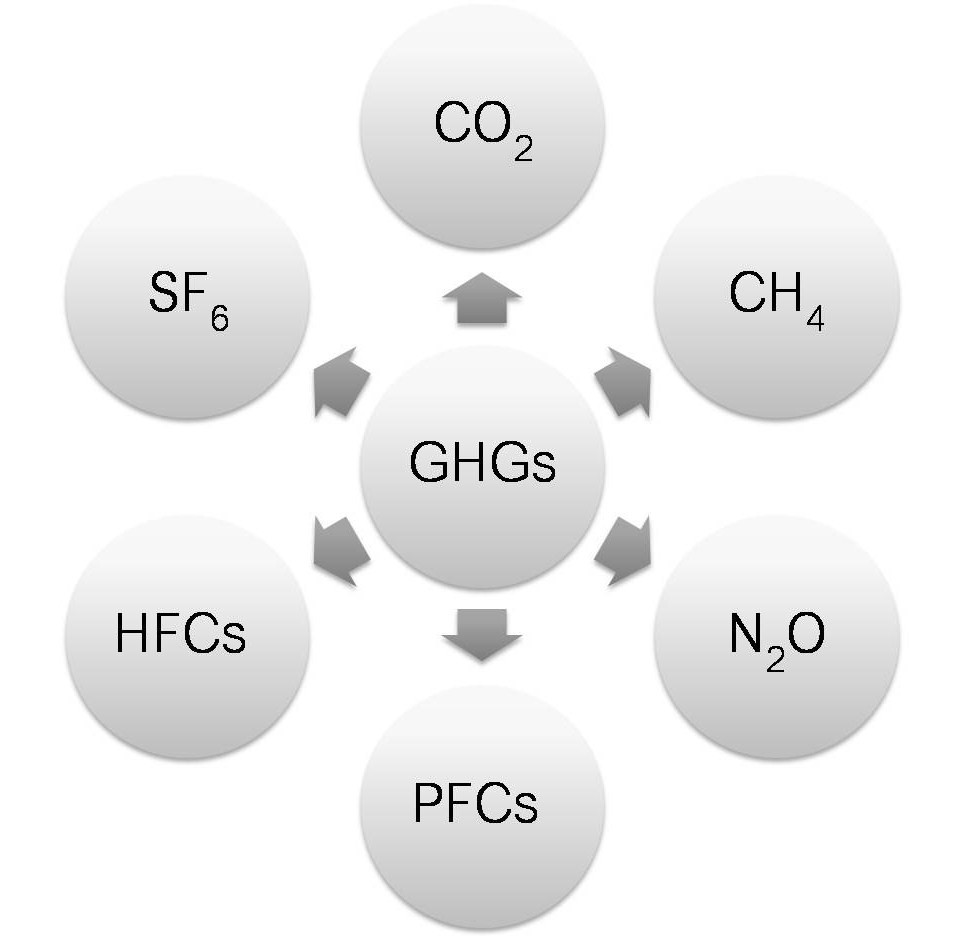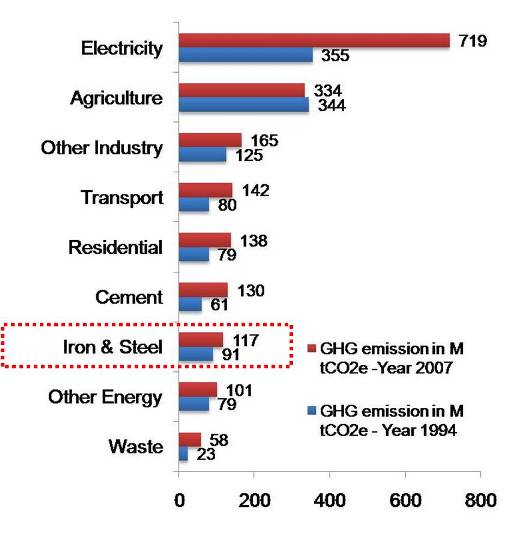Carbon Management at Iron and Steel Sector –Relevant Regulations
 National Action Plan on Climate Change creates a set of policies and regulations for industries, basically the high GHG emission intensive industries to put a cap on their emissions. These policies and regulations help to create an environment for the implementation of low carbon emission technologies and capacity building. GHG emission in the steel sector primarily occur as a result of energy consumption. Therefore, government of India introduced policies and regulations forcing reduction in energy consumption and efficient energy generation. Following are the key policies and regulations introduced by government of India
National Action Plan on Climate Change creates a set of policies and regulations for industries, basically the high GHG emission intensive industries to put a cap on their emissions. These policies and regulations help to create an environment for the implementation of low carbon emission technologies and capacity building. GHG emission in the steel sector primarily occur as a result of energy consumption. Therefore, government of India introduced policies and regulations forcing reduction in energy consumption and efficient energy generation. Following are the key policies and regulations introduced by government of India
REC and RPO regulations: Government of India being signatory to Kyoto Protocol is emphasizing on energy efficiency and increasing use of renewable energy in carbon mitigation. To push the increasing use of renewable energy, Government of India introduced Renewable Purchase Obligations (RPO) under the Electricity Act -2003. RPO is applicable to the consumer which consumes energy from fossil fuel based source. As per the RPO regulations, such consumers shall have certain percentage of its energy from renewable energy source. The percentage of RPO is decided by the Central Electricity Regulatory Commissions and Electricity Regulatory Commissions of respective states.
Iron and steel industries uses captive power plants to fulfill their high energy intensive operations. Most use coal as a fuel. Therefore, such power plant come under the purview of Renewable Purchase Obligations. It means that industries with fossil fuel based power generation have to comply with RPO under the EA act 2003. If the obligated steel industries doesn’t comply with their obligations under the RPO regulations, they will be penalized under the EA act.
Either they can generate renewable power or can buy Renewable Energy Certificates (REC). REC is the green component of energy generated by renewable energy source. Similar like carbon trading, scheme, RECs can also be bought or sold from the energy exchanges of India. These credits can be used to comply with the Renewable Purchase Obligations of the obligated entities. For measurement purpose, one REC is equivalent to 1000 units of renewable electricity.
Carbon Tax: Another recent domestic regulation in India is carbon tax. To prevent over use of high carbon intensive fuels; in 2010, Government of India had set up a policy on carbon tax. Under the carbon tax regulations, government of India is levying Rs. 50 for each metric ton of coal (domestic and imported) used in India. Carbon tax can be called as a tax on carbon or an environmental tax that is mostly levied on carbon content of the fuel. The fundamental concept behind carbon tax is to prevent the over use of fossil fuels and limit its use to a certain level. Money collected from carbon tax will help to create National Clean Energy Fund for financing research and innovative clean energy technologies in the country. Heavy industries like Power, Steel and others are the most vulnerable sectors for the carbon tax. Read more on Carbon tax.
National Mission on Enhanced Energy Efficiency (NMEEE): NMEEE is an integrated approach for climate change mitigation through energy efficiency measures. The mission has commenced implementation from April, 2011 under the flagship of the ‘Perform Achieve and Trade (PAT)’ initiative. The Perform Achieve and Trade scheme is a market-based mechanism to enhance energy efficiency in the large energy-intensive industries like steel. PAT scheme creates energy efficiency targets to be met and incentivizes businesses achieving higher energy efficiency with tradable energy saving certificates (ESCerts). The market for these ESCerts will be the entities that will not meet their energy efficiency targets and will need to buy these ESCerts to meet the energy efficiency norms. Please click here to know more on National Mission on Enhanced Energy Efficiency



